Putting Hotspots training into practice in the NSW Southern Highlands
Following the successful Hotspots burn on our Canyonleigh property in early May we applied for a second burn on Thursday, July 19.
A condition of the application was to contact RFS Fire Control 24 hours before to see if weather conditions would be suitable. On Wednesday morning Fire Control advised postponing the burn due to forecast strong winds plus acutely dry conditions caused by lack of rainfall.
Another condition was to alert neighbours which we did by letterbox drop with a proviso that inappropriate weather could mean postponement.
Friday was windy but the Bureau of Meteorology website indicated Sunday and Monday could be suitable for the burn. On Saturday morning we contacted local RFS district inspector David Bartlett and although he was off duty (thanks David) he gave conditional approval for Sunday depending on forecast wind speeds.
Preparations included mounting a 1,000 litre tank on the ute with a petrol fire pump, hoses, buckets and mops. Humans' accessories included natural fibre clothing, leather boots, hats and optional face masks.
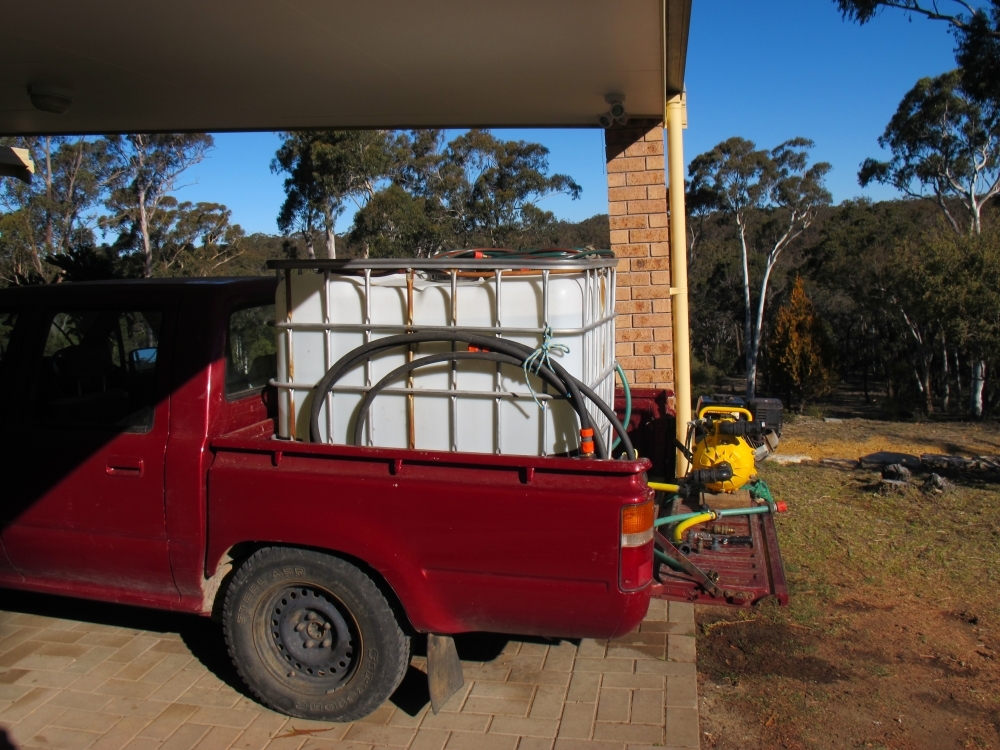
All water supply connections were duplicated so if one failed a spare was available. There was spare petrol for the pump and the ute's diesel tank was full. We ran the system on the Saturday to make sure everything worked. Our quad 'bike was positioned near the burn site with the trailer holding a few 20 litre water containers and several fire rakes.

Sunday arrived and on the local radio station there were reports from the RFS that 110 fires had needed their attention on the Friday and Saturday.


It was very cold overnight with early morning frost but by 10 am the frost was almost gone. Just before we were ready to begin, neighbours, Ana and Jeanie drove in, all kitted out with their fire rakes ready to help.
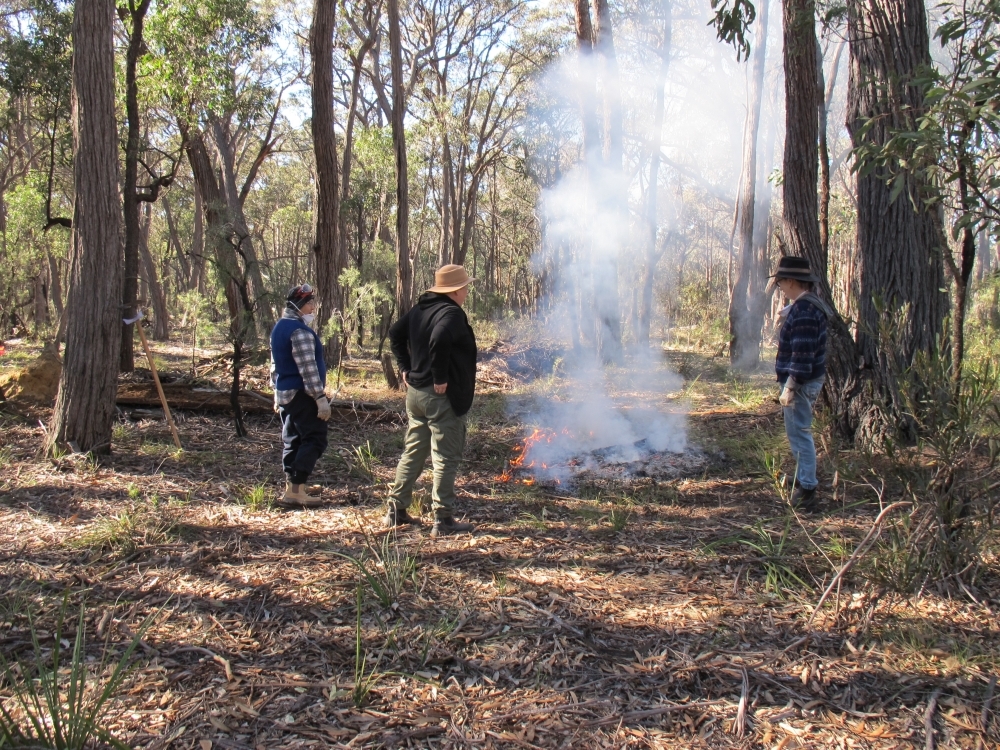
The prescribed burn in May followed two intensive workshops. On that occasion there was the full Hotspots team, a fully crewed fire truck manned by a team of seasoned Canyonleigh volunteer fire fighters and more than 20 workshop participants.
On this day there were just the four of us standing among various sized live and dead trees, surrounded by 2-15cm deep, tinder dry leaf litter, sticks, bark and fallen branches.

We did the leaf burn test and there was no doubt things were ready to burn.
Our plan was to start very small and be ready to extinguish the fire at the slightest hint it could get beyond us. Jeff said later he visualised the headline: Canyonleigh couple cause wildfires in NSW Southern Highlands as he lit the first small pile of leaves and sticks.
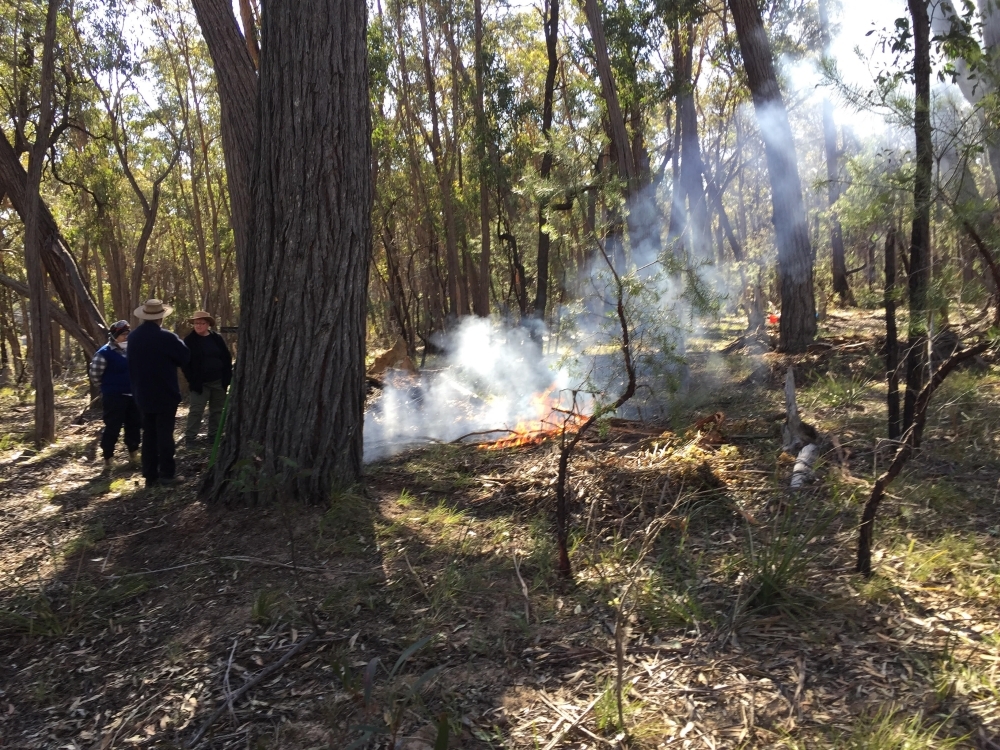
We have regularly burned off in cleared areas with no surrounding combustible materials. However, it's a different feeling when in the midst of small and large trees, a canopy above and crunchily dry material all around.
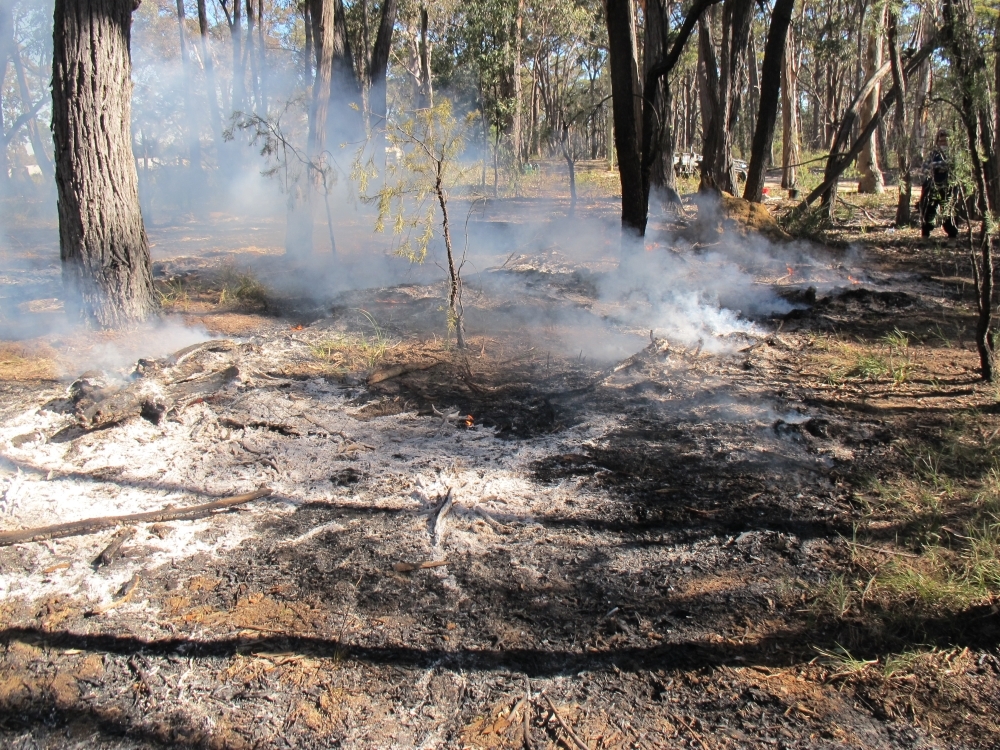

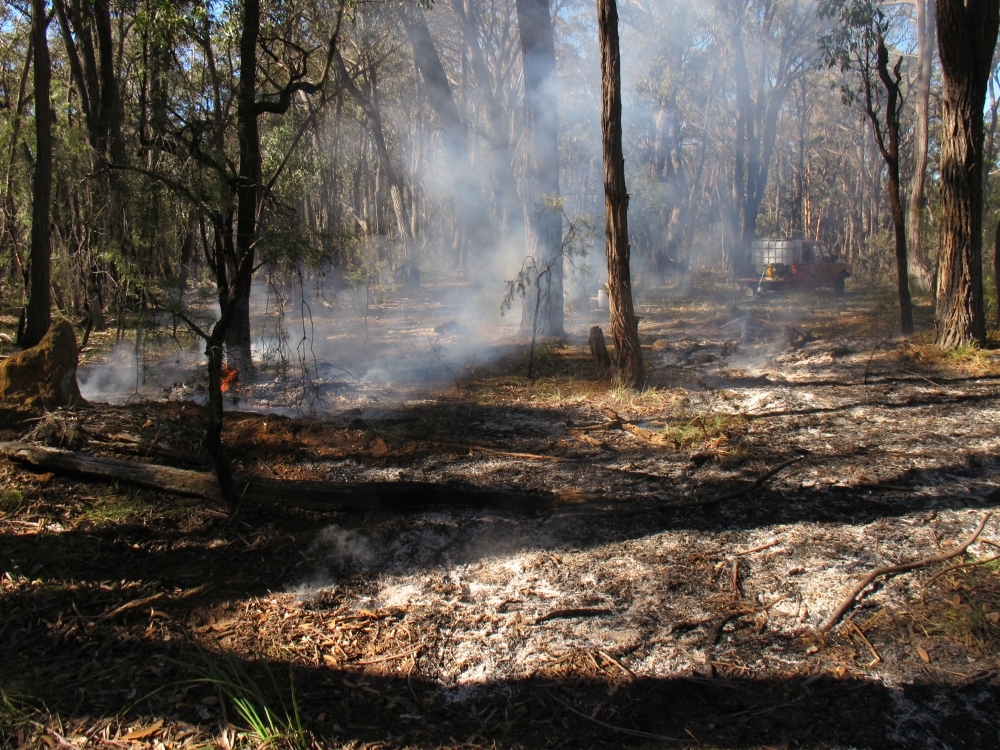
Initially the fire spread slowly and we observed how even the slightest breeze sped it up. Within minutes of igniting the first pile of leaves kookaburras and magpies gathered nearby. Soon they were picking off prey on the fringes of the fireground.
Part of our plan was to practice limiting the spread with judicious raking and wet-mopping. At the beginning this was successful but it soon became evident that it would be difficult to contain a rapidly spreading leaf litter fire over a larger area with even a mild breeze.
We allowed the fire to spread to a more heavily fuelled area around a medium-sized stringy bark. The litter had been raked away for about a metre around the tree but soon the bark around the base was on fire from the radiant heat. Wet-mopping helped but very soon the base of the tree was on fire. The water pumping system was used to put out the burning bark. By then the litter burning nearby had died down so we allowed the fire to move on.
Throughout there was a gentle breeze which frequently changed direction. Thanks to the lessons learned at the Hotspots workshops we felt in control. Having the hosing system at hand was vital.
The burn continued for a few more hours and by then several large fallen branches were alight but well within burnt areas so not a danger.
Early afternoon we decided to rake around the perimeter of the burnt area and allow the fire to burn itself out.
The magpies and kookaburras had been joined by butcher birds by now and all were feasting as we raked and watched.
Next morning, after regular checks through the night, there were only some smouldering patches.
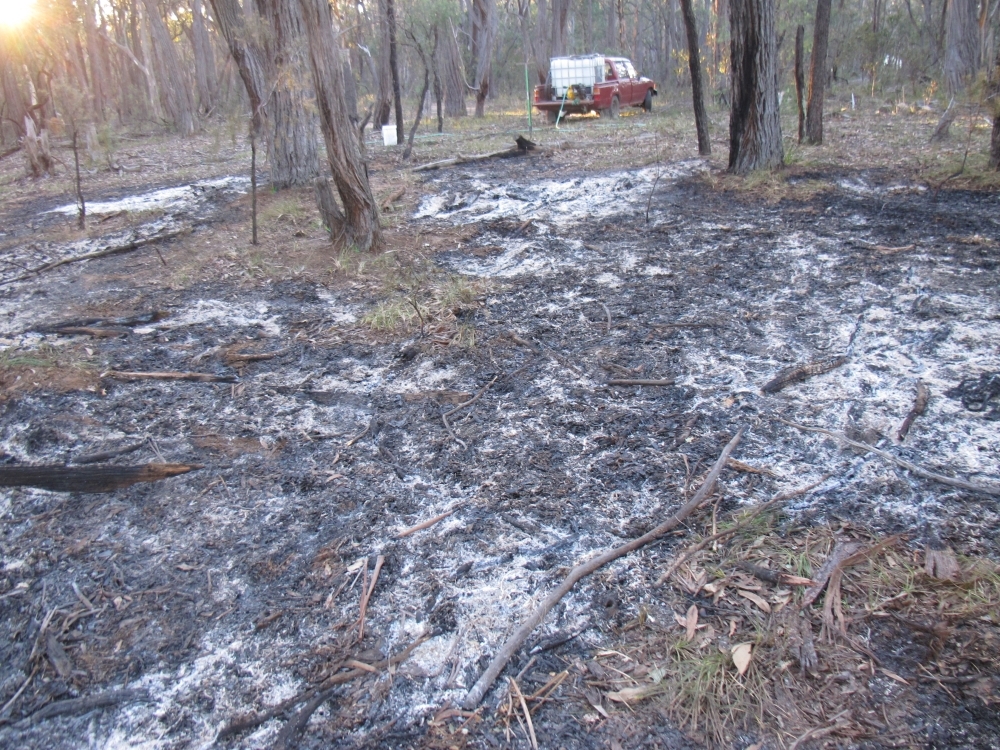
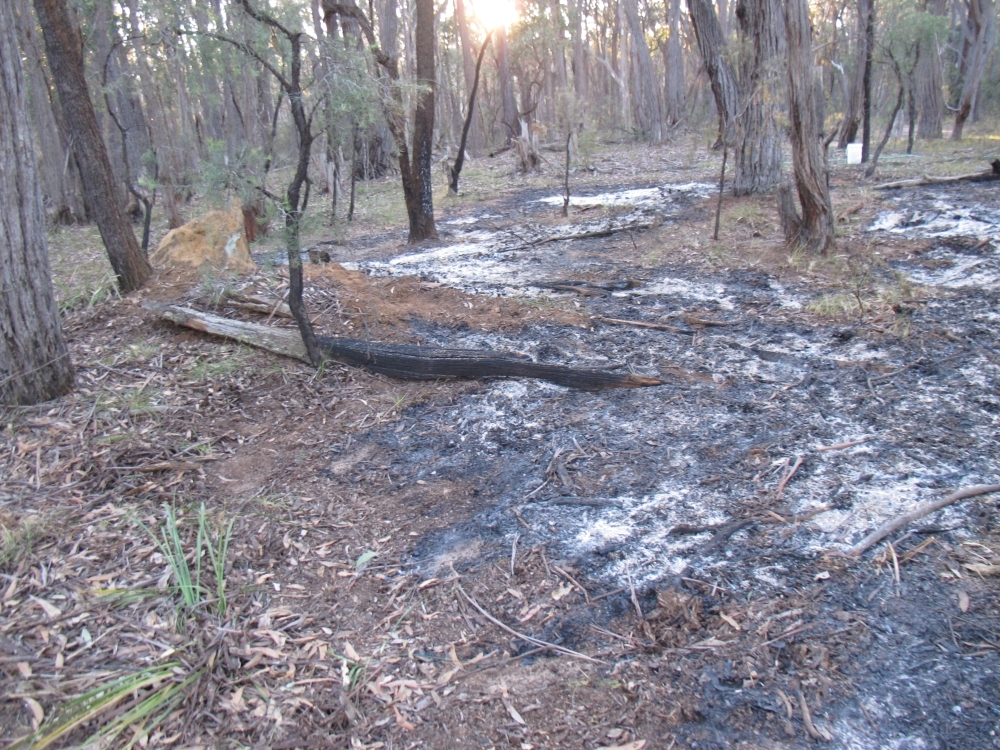
The burn was only across an area about the size of a tennis court but thorough. It satisfied our objectives of being able to initiate and control a fire in a heavily wooded environment with few people and minimal equipment.
Planning and preparation were crucial.
We were grateful for the information and experience gained at the Hotspots workshops and look forward to carrying out further small mosaic burns to diminish bushfire risk and promote conservation values.
Susie and Jeff
Canyonleigh July 2018
Photos of the first Hotspots supervised burn in May 2018 can be seen here -
~ First Canyonleigh HotSpots Burn ~
** * * * * * * * * * * * * * * * * ' * * * * * * * * * * * * * * * **












